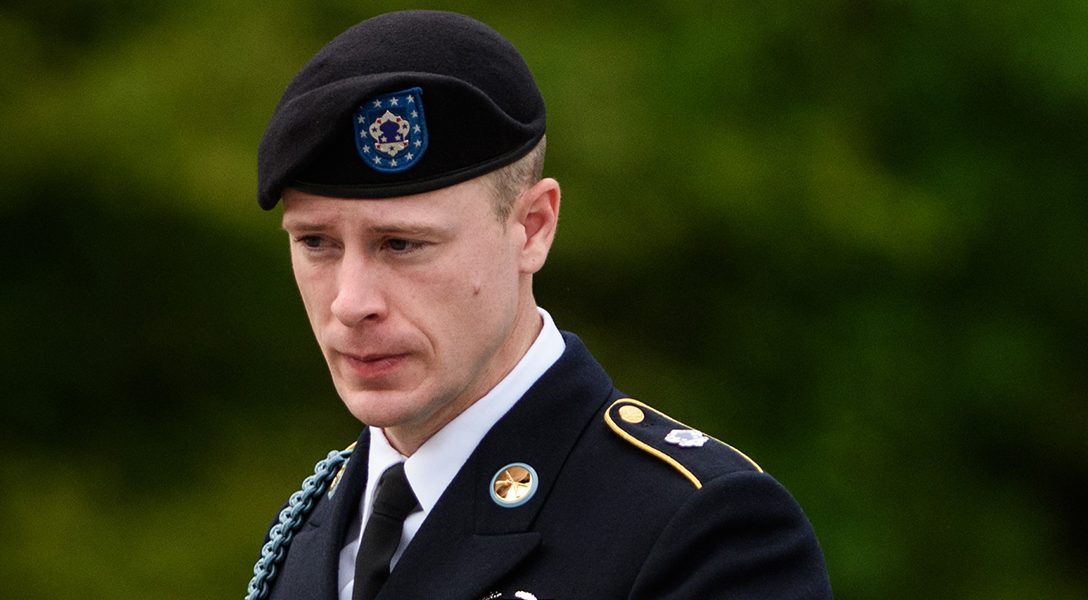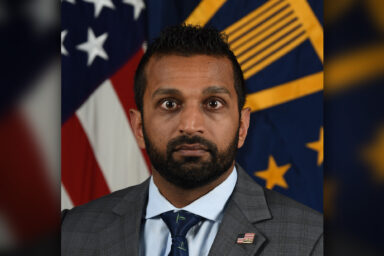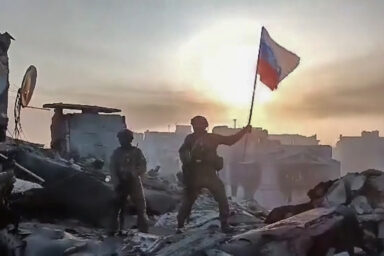Bowe Bergdahl’s story exemplifies government dysfunction, political posturing, and a failed American policy.
Journalist Michael Ames joins Jeff Schechtman in this week’s WhoWhatWhy podcast to talk about the high-profile military crimes of Bowe Bergdahl — and what they say about both Bergdahl and the failure of US efforts in Afghanistan.
Bergdahl, the longest-held American POW since Vietnam, endured five years of hellish conditions. But his story is best remembered for the controversial prisoner exchange that he was a part of.
Ames argues that Bergdahl was a contradictory character, who never should have been accepted into the military and sent to Afghanistan. As a recruit in the US Coast Guard, he lasted only a month before being discharged. Nevertheless, the Army, so desperate for soldiers that it lowered its standards, later accepted him.
From his arrival in Afghanistan in May 2009 he questioned the rationale behind US military involvement in that country. Ames says that Bergdahl had always planned to walk away from his remote military post into the desolate countryside.
After his capture by Islamic terrorists, and during five years of imprisonment in Pakistan, Bergdahl became fodder for controversy on an international level.
Among the issues: Was Bergdahl actually tortured by his captors? Was he really planning to become an enemy combatant? Did the US military and government lie to the public about the circumstances of his capture? (Ames says yes.)
Ames recounts the details of how the US government handled the negotiations for his release and the unusually light sentence he received — considering he could have been put in prison for life.
Bergdahl’s story, as described by Ames, amounts to a strong critique of US policy in Afghanistan under both Republican and Democratic administrations.
Click HERE to Download Mp3
Full Text Transcript:
As a service to our readers, we provide transcripts with our podcasts. We try to ensure that these transcripts do not include errors. However, due to time constraints, we are not always able to proofread them as closely as we would like. Should you spot any errors, we’d be grateful if you would notify us.
| Jeff Schechtman: | Welcome to Radio WhoWhatWhy. I’m Jeff Schechtman. |
| For centuries, writers have looked at how the adherent drama of war created heroes and villains, and defined the image of the soldiers who fought in them. Yet we often overlook that the opposite is true, that in many cases, soldiers and their individual actions, both heroic and sometimes disgraced, have defined the nature of the wars in which they fought. Audie Murphy or Edward Slovik in World War II, John Paul Vann and William Calley in Vietnam, Lynndie England in Iraq, and perhaps the story of Bowe Bergdahl in Afghanistan in 2009. | |
| That’s the story that my guest, Michael Ames, has researched deeply and tells in his new book, American Cipher: Bowe Bergdahl and the US Tragedy in Afghanistan. Michael Ames is a regular contributor to numerous publications, including The Atlantic, Slate, and The Believer. He spent nine years in Idaho working as a newspaper reporter and magazine editor. It is my pleasure to welcome Michael Ames to Radio WhoWhatWhy. Michael, thanks so much for joining us. | |
| Michael Ames: | Thanks for having me. |
| Jeff Schechtman: | For our listeners, give a quick thumbnail, for those that don’t remember … and it’s been a while now … what the Bowe Bergdahl story was at core. |
| Michael Ames: | Most people remember Bowe Bergdahl for being released in a 2014 prisoner exchange ordered by President Obama, a lopsided exchange. He was exchanged for five Taliban officials held at Guantanamo Bay, which turned into a political firestorm that Republicans leveraged against President Obama successfully, in many ways. |
| He was held in Pakistan for five years in brutal captivity, the longest-held American POW since Vietnam. He ended up there for a pretty strange reason, which is that he walked off his outpost, unarmed and alone, in the middle of the night. People knew so little about what he had done and why he had done it for so long, that rumors, innuendo, and Taliban propaganda filled the vacuum. Only now that we’ve done this full research, can we come to really see how the truth of his story reveals so much more about the US involvement in Afghanistan. | |
| Jeff Schechtman: | Right. And there was so much that was reported at the time, all around this idea that Bergdahl somehow was a deserter, that he had walked off as a deserter to get away from his responsibilities. |
| Michael Ames: | It’s true that he walked off. It’s true that desertion is a crime, and that he pled guilty to it. Now, his defense lawyers would argue that he went AWOL and was kidnapped while he was AWOL. Of course AWOL’s a much lower-level crime than desertion, but ultimately, he decided to plead guilty to desertion and throw himself at the mercy of the court. |
| Jeff Schechtman: | One of the things that’s so remarkable about this story is that it’s so hard to remember it and understand it without the broader context that you provide in American Cipher, as to who Bowe Bergdahl was and a bit about his upbringing. Talk about that. |
| Michael Ames: | What we discovered through sources and particularly through Bergdahl’s parents, who spoke to us at great length, is this was a well-intentioned, naïve guy who was desperate to prove himself in a military way. He volunteered for the military on two different occasions, the first time for the coastguard, where he washed out of basic training with an anxiety attack. The coastguard said that he could not reenlist in the armed forces without clearance from a psychologist. Yet when he went to reenlist in the army two years later, that requirement was waived, and they took him in despite some pretty legitimate mental health concerns. |
| Jeff Schechtman: | Why did they let him in? |
| Michael Ames: | They needed people. They needed bodies. President Obama … to rewind here, to refresh everybody’s memories … President Obama did a significant, exhaustive review of Washington’s Afghanistan policy. He was lobbied heavily by the Pentagon to drastically increase America’s troop presence, which he did. He didn’t do it quite to the level that the generals wanted, but he did triple the American footprint on the ground in Afghanistan in a short period of time. |
| So it was a significant surge, and they needed bodies on the front lines. When they need bodies, they lower standards, and people get in. Most of the people who get in on those lower standards would be people with criminal records or people with learning disabilities. In Bergdahl’s case, it was someone with a unique psychological condition, that he slipped through the cracks. | |
| Jeff Schechtman: | Tell us a little bit about his personality, about his upbringing, his self-centeredness, and yet he was kind. I mean, he had a lot of interpersonal skills, and yet sometimes they didn’t work for him. |
| Michael Ames: | That’s right. Ultimately, army psychiatrists diagnosed him … two different … well, one army board psychiatrist and then another forensic psychiatrist independently diagnosed him with something called schizotypal personality disorder, which is a rare personality disorder that tends to … some people call it schizophrenic lite. It leads people to have rich inner fantasy worlds and concoct grandiose ideas. Sometimes people with this disorder are highly intelligent, like the chess master Bobby Fischer, to cite one example. It does not make for a good candidate for the social cohesion necessary in an army unit. |
| Jeff Schechtman: | Beyond the social skills, when he got to Afghanistan, it was pretty early on that he started talking about and questioning America’s role there. Talk a little bit about that. |
| Michael Ames: | That’s right, and I don’t think he was unique in that way. We interviewed so many veterans, and Matt Farwell, my co-author, is himself an army veteran who saw that things were different on the ground than they were described to people back home. What he saw was very similar to a lot of complaints that a lot of guys had about the way the war was being fought, and the way that the army was or was not helping the local population in Afghanistan. |
| Unlike all other people in that scenario, Bergdahl decided to do something crazy to fight the system on his own, and of course he walked into the worst possible trap that he could. | |
| Jeff Schechtman: | He didn’t have a lot of respect for the higher-ups either. |
| Michael Ames: | No, he didn’t, but I think, in some of those cases, what he saw was accurate. He saw higher-ups, commanders, who were doing things for reasons other than the supposed and advertised causes of helping the Afghan people. He saw higher-ups doing things to please their own commanders. He saw higher-ups, in one notable case, put on a little tirade and kick an Afghan grave down, just to look like a tough guy. For Bergdahl, who believed in this noble American mission that he signed up for, he found this totally shocking. |
| Jeff Schechtman: | He made an effort to get to know some of the Afghan people. How much did he do that, and how effective was it? |
| Michael Ames: | The Americans on his base shared the base with an adjacent area of Afghan national police soldiers, which was common because the idea of a counter-insurgency, the plan was to build up these bases and then turn them over to the Afghans to run on their own. |
| He, together with a couple of his friends in the platoon who, like him, were somewhat more thoughtful and guys who were more understanding and curious about the Afghan culture, they would go up and eat meals with the Afghan soldiers. They would try to get to know them, also … as Bergdahl said himself … as a precaution so that they didn’t end up with a murder on their hands, which happened in so many … There’s too many tragic instances to even cite of Afghan soldiers turning on and killing their American trainers. | |
| Jeff Schechtman: | Was there a particular moment for Bergdahl that he decided that he was going to do something like walk away from his post? |
| Michael Ames: | I think it was a gradual build-up of frustration, but seeing his lieutenant commander of his battalion kick an Afghan grave in a cemetery was a pretty big trigger for him. That made him see that the emperor had no clothes, and that what he signed up for was not as it was playing out on the ground. |
| Jeff Schechtman: | How did he see the enemy? How did he see the Islamic terrorists that he was supposedly there fighting against. How did he view them? |
| Michael Ames: | He certainly wasn’t sympathetic to them. That notion, that he became a traitor or that he sympathized with them, was picked up, of course, by the right-wing media and Republican operatives, when it, in fact, was Taliban propaganda to start with. They were putting out false reports. |
| As readers will learn in the book, and as we discovered from our sources, sometimes very elaborate Taliban disinformation campaigns feeding false stories to western journalists about how Bergdahl had converted to Islam and was training fighters … and none of it was true. He saw them, both beforehand and as their captive, as barbaric people who treated women horrifically and who were hurting the average Afghan civilian. | |
| Jeff Schechtman: | Do you have a sense that, after his capture, did anything in his attitude change, did anything in his outlook, with respect to the American role there? |
| Michael Ames: | I certainly can’t speak for him precisely, but I would say that he was aware that they were looking for him. He could hear drones in the sky above him when he was in western Pakistan. He was so grateful when he was rescued, and he actually figured out who the people on the helicopter were, that they were special forces. He took one of the soldiers’ hands, and just didn’t let it go, and just broke down crying out of gratitude. |
| Jeff Schechtman: | When he was captured, talk a little bit about the conditions and later, as you mentioned just a few moments ago, he was moved to the border on the Pakistan side. |
| Michael Ames: | He was moved across the border very early on. The Taliban knew what they were doing. They put out false intelligence reports, filling the local radio chatter with false sightings, to lure the Americans into traps and ambushes. Meanwhile, Bergdahl was whisked over the border. |
| What’s really incredible … what we discovered, what our sources told us, and what needs to be, I think, taken away here … is that soldiers were sent on dangerous missions to go looking for him. They did as they were ordered, but they were sent on those missions after the army already knew that Bergdahl was gone. The army knew he was in Pakistan, but they used him as a cover story to run aggressive raids and as a shortcut around rules of engagement that they didn’t like. | |
| Jeff Schechtman: | Where were those decisions made with respect to the way the army was going to play this out, and also the disinformation that they engaged in with respect to Bergdahl? |
| Michael Ames: | Excellent questions, both. On the first count, it was kind of a disorderly situation. We have to remember that, at that point in the war, the top generals, Stan McChrystal and Mike Flynn … the same Mike Flynn we now know from the Trump administration … had only just arrived in country a couple of weeks earlier. So they were just getting started. |
| To answer your first question, by July 13 … so 13 days after he went missing … there was a consensus in the intelligence community that he was in Pakistan. But in CENTCOM, Central Command … the part of the Pentagon that commands the wars out of Tampa Bay … they decided not to accept that intelligence, even after all the other intelligence agencies did. And why is that? So that they could continue sending men out on these aggressive raids to supposedly look for Bergdahl, which was really just a cover story. | |
| Jeff Schechtman: | There were also stories that Bergdahl had become an enemy combatant. Talk a bit about where those stories emanated from. |
| Michael Ames: | Totally false, and those emanated … The origin of all those was Taliban propaganda, which was leaked out very strategically, in some cases to western journalists, in some cases to intelligence assets on the ground. |
| To give you one other example that readers can find in the book, US Army soldiers would go into a small village with a briefcase full of cash and ask people, “Is it true that the soldier who was captured is a Taliban sympathizer?” They would say, “Yes,” and they would receive cash for telling them those stories. So there were a number of ways that these rumors became memorialized in intelligence reports, when in fact, none of them were based in reality. | |
| Jeff Schechtman: | It does seem that there were so many lies told and so much misinformation with respect to Bergdahl’s story told by the US military and things like the story you just told with respect to the cash, that after a while, it was hard to know what the truth was. |
| Michael Ames: | Absolutely. I think, in that way, Bergdahl is a good foreshadowing of the general American struggle right now with the truth, with facts, and with information versus disinformation. |
| To tie it to current events, the Trump administration is currently in peace talks with the Taliban in Doha. This should be front page news in every paper in the country, but it isn’t. More astounding, of that Taliban peace delegation are the five men who were released in the trade for Bergdahl himself. So we are now … the Trump administration … negotiating with men who Trump called terrorists and killers. | |
| Jeff Schechtman: | How did the negotiation … well, let me ask you first, was Bergdahl tortured? What do we know about that? |
| Michael Ames: | He was tortured. It was the worst captivity any American had experienced since Vietnam. In the book, you’ll learn what we learned from our sources, who debriefed Bergdahl and went into great detail about the torture, the neglect. The neglect was possibly even worse than the torture, in the sense that he was malnourished. He became skin and bones. He suffered from severe dysentery for years. |
| He tried to escape many times, in one case successfully escaping for nine days. It’s an incredible story. | |
| Jeff Schechtman: | What was the attitude of the Obama administration? What did they know about what was really happening on the ground over there with respect to Bergdahl? How did they handle it? |
| Michael Ames: | They thought they knew things because the military and the intelligence agencies had sources that were placed. But what they learned when Bergdahl came back, is that they really didn’t know as much as they thought, and that they really had very little insight into what was really the truth of his captivity. |
| The intelligence agencies and the military came to truly value Bergdahl as an intelligence asset upon his return. They debriefed him for over 80 hours and used that information to build classified reports that, in many cases, led directly to drone strikes taking out jihadists in western Pakistan. | |
| Jeff Schechtman: | How did the negotiations for his release get underway? |
| Michael Ames: | That is a very deep background story that is so complex. It’s just incredible how little contact Washington had with the Taliban in any way, shape, or form. The Obama administration and the State Department had to find people to go open channels to go talk to the Taliban because, under the Bush administration, the policy had been, “We don’t negotiate with the Taliban, period.” Fast forward 15 plus years, and here we are doing just that. |
| Jeff Schechtman: | What form did those negotiations take? |
| Michael Ames: | They were held in secret. They were held in Germany and in Doha. The Qatari government and the German government were co-mediators, hosting a very small team of Americans and one Afghan man who spoke on behalf of Mullah Omar. Those were extremely delicate negotiations that were very hard to put together, that required significant secrecy, even within the US government. So it’s quite striking to think about how delicate that situation had to be handled by the Obama administration, compared to what’s happening right now under Trump. |
| Jeff Schechtman: | How well was it handled? What were the mistakes, and what did they do right? |
| Michael Ames: | It’s always easy to be a Monday morning quarterback on these things. They did a lot of things right, in the sense that they pursued the talks that were available to them to bring Bergdahl home. They did things wrong in the sense that they were stubbornly set on things, on conditions, that would connote or suggest a greater leverage than we ever really had. We haven’t really had leverage in that country in many, many years. |
| What our sources told us … what we discovered … is that the five guys Bergdahl was traded for were, in many ways, a forgone conclusion that the Taliban wanted them back. There were other trade possibilities that were looked into, as we discovered and as we write about, but the one that the State Department wanted to see through was this one with the Taliban officials. | |
| Jeff Schechtman: | While all this played out, give us a little portrait of Bergdahl’s parents and what they were seeing and what they were going through. |
| Michael Ames: | They were embraced and taken in by the military in really astounding ways that were fairly unprecedented if you think back to Vietnam and what POW families went through then. None of them were given the sort of treatment and access that the Bergdahls were. |
| They were very close with joint chiefs-of-staff at the time, Admiral Mike Mullen, and with then-General James Mattis, who of course went on to be Secretary of Defense. Mattis flew to their home at one point in Idaho. They were truly involved in the process, but they also didn’t know that much because the American government didn’t know that much. Their son had fallen into a black hole, where no one could reach him or see into his conditions. | |
| Jeff Schechtman: | Once Bergdahl was released, tell us a little bit about how that played out. |
| Michael Ames: | I saw it firsthand in Hailey, Idaho, where I used to live. I had friends who received death threats because they made the mistake of saying on camera that they were happy that the local boy had survived. Of course, once the media turned him into a pariah and vilified him, the local community was really whipsawed through a truly traumatizing event with the media. I think it’s a real indictment of how the political media entertainment system works in this country. |
| Jeff Schechtman: | What impact did that have on Bergdahl once he was out and he saw this playing out in the media? |
| Michael Ames: | He knew that he was being vilified. I think he had to have a bit of a sense of humor about it because … you have to remember, and as you’ll learn in the book … he was helping the military with intelligence debriefings and doing his best to do everything he could to lead the military and the CIA to go find terrorists in Pakistan. Meanwhile, on TV every night, they’re calling him a terrorist sympathizer. So it was a real schizoid view of reality that he had to develop a pretty thick skin about. |
| Jeff Schechtman: | There was a pretty loud chorus of people that wanted him court-martialed or worse. |
| Michael Ames: | Absolutely, and he was court-martialed, but the degree to which he was court-martialed and the amount of money and time that the army poured into that court-martial was determined by politics more than by the facts of the case. That’s what our reporting and our sources really show. |
| Jeff Schechtman: | Finally, talk a little bit about Bergdahl today and how he’s doing. |
| Michael Ames: | I think he’s ready to move on. This was obviously a horrific experience, to be rescued and brought home, only to then learn that you’re the most hated soldier in the army. There’s still guys in the army out there who’d be happy to see Bergdahl hurt or worse. So he has to be very careful, and he has to live a very under-the-radar life. It’s sad, but the worst of his trauma is over. |
| Jeff Schechtman: | Does he talk about or have views on the American role in Afghanistan today? He was pretty vocal about it when he first got to country. |
| Michael Ames: | That’s right. I don’t know that he speaks about it now. He was pretty eager to get out of the public eye, and of course, under legal advice, not to talk too much about it much either. |
| Jeff Schechtman: | Michael Ames, the book is American Cipher: Bowe Bergdahl and the US Tragedy in Afghanistan. Michael, I thank you so much for spending time with us. |
| Michael Ames: | Thanks for having me on. |
| Jeff Schechtman: | Thank you. And thank you for listening and for joining us here on Radio WhoWhatWhy. I hope you join us next week for another Radio WhoWhatWhy podcast. I’m Jeff Schechtman. |
| If you like this podcast, please feel free to share and help others find it by rating and reviewing it on iTunes. You can also support this podcast and all the work we do by going to WhoWhatWhy.org/donate. |
Related front page panorama photo credit: Adapted by WhoWhatWhy from Gel3naUVA / Wikimedia (CC BY-SA 4.0) and Global Panorama / Flickr (CC BY-SA 2.0).






